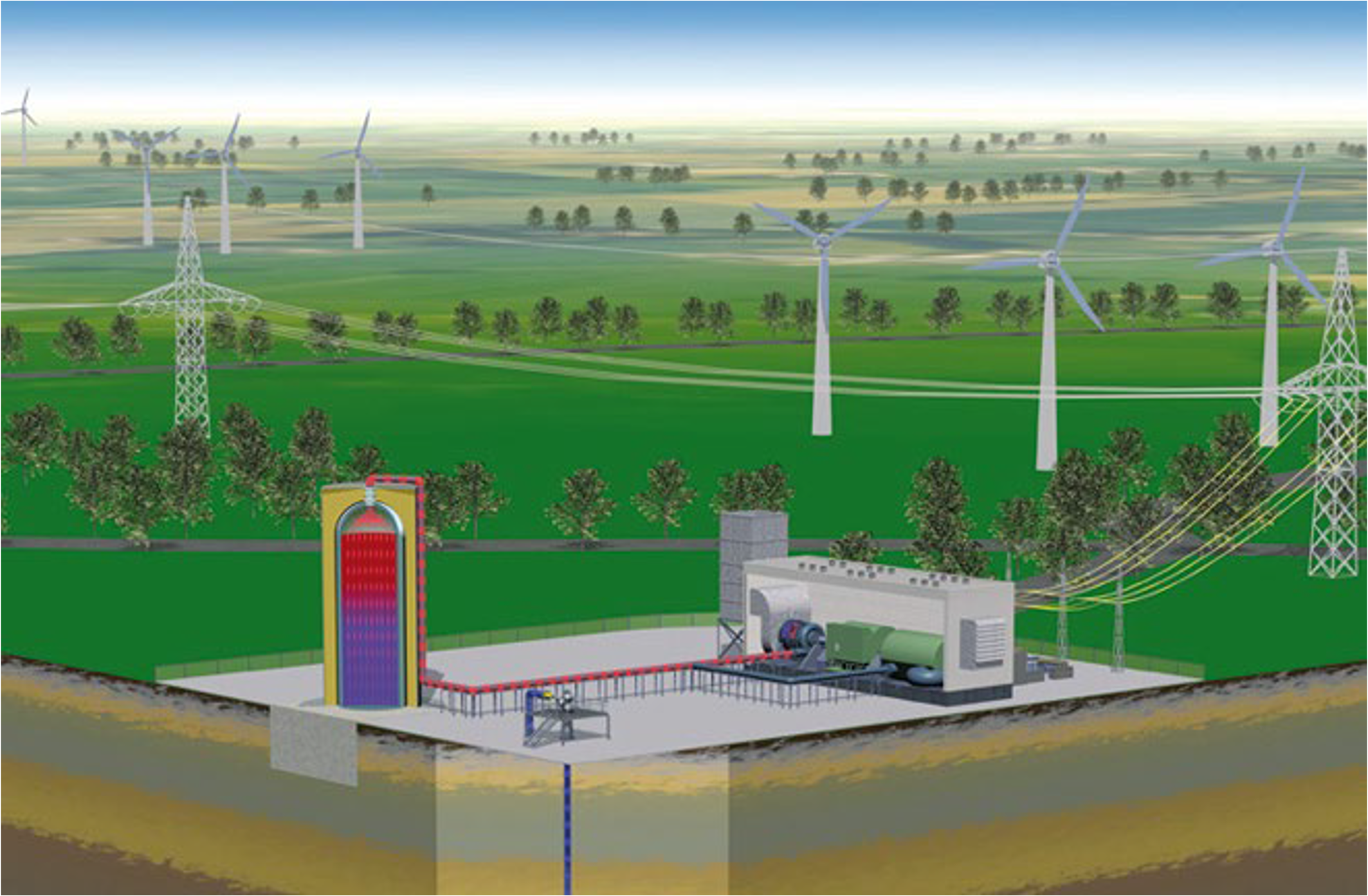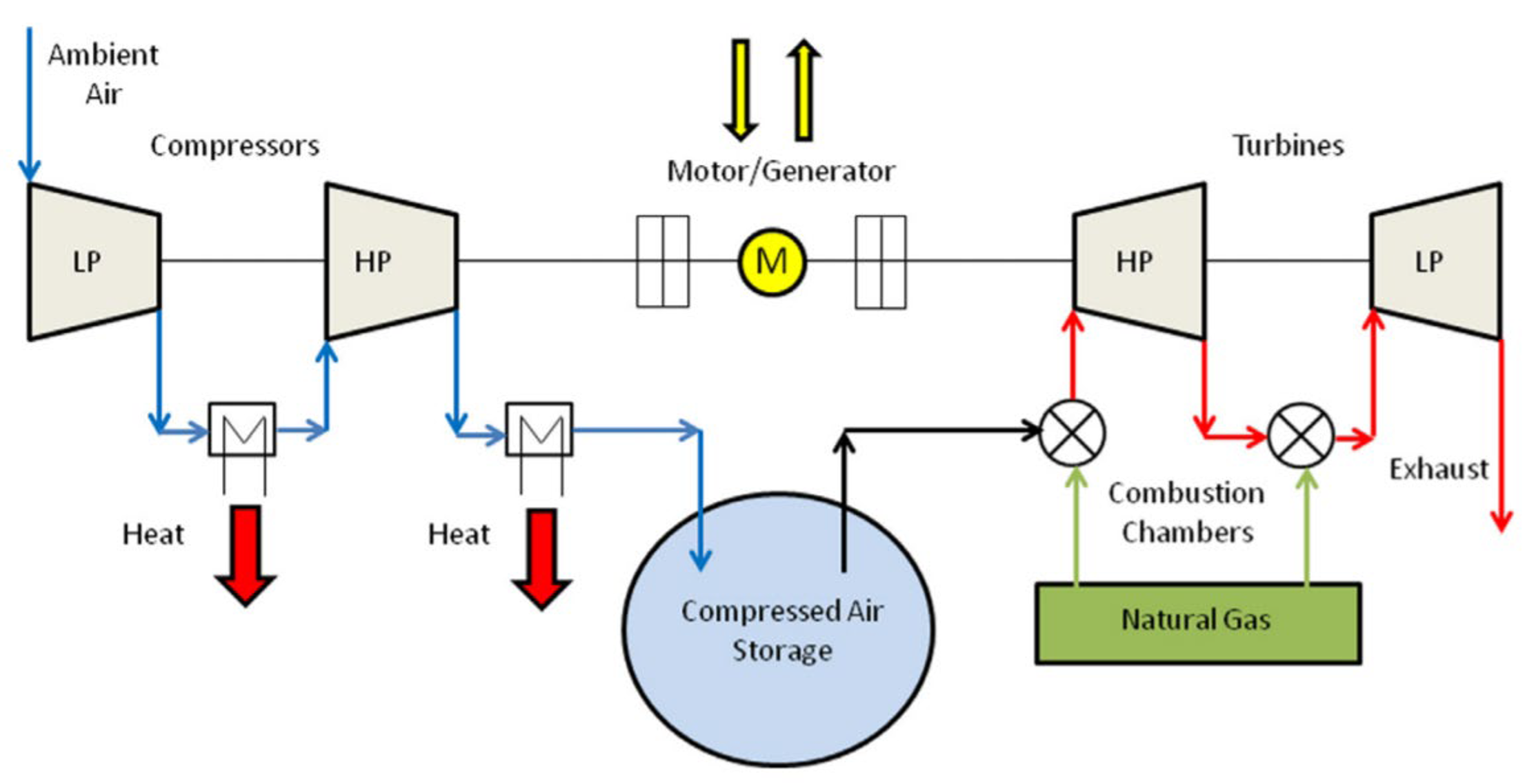Compressed Air Energy Storage
Technical Description
Compressed Air Energy Storage (CAES) is a way of storing electrical energy mechanically and thus the input is electricity to drive a compression. In the most basic form of CAES electrical energy is used to compress air, which can subsequently be stored in pressure tanks or in huge amounts in underground formations, where such suitable formations are available. When release of the stored energy is required, the compressed air is used to drive a turbine able to generate electricity. The expansion of air is associated with a temperature drop.
When air is compressed, heat is released and constitutes a loss of energy during the storage operation because it dissipates to the external environment. However, if the heat may be stored intermediately (e.g. sensibly in ceramic material), the heat may be reinjected during the expansion process and thus it is not lost.
This has an impact on the overall efficiency (electricity to electricity). This form of CAES is usually called Adiabatic CAES, A-CAES (or sometimes Advanced Adiabatic CAES, AA-CAES) because of the lack of exchange of heat between the storage system and the external environment. Additional forms of CAES have been proposed, such as isothermal CAES. For these additional forms of CAES there are currently no commercial installations, and we will only consider CAES and AA-CAES here.
Presently CAES technology is used in combination with gas turbine combustion, which can be said to compensate for the temperature drop. Therefore, CO2 is released in traditional CAES.

Compressed Air Energy Storage (CAES)
Technology Flowchart


Operating principle of two different CAES plants
Technology requirements and operating conditions

Energy transfer of a conventional CAES plant
Documentation (Links, References)
- Danish Energy Agency, Technology Data for Energy Storage, April 2024, https://ens.dk/sites/ens.dk/files/Analyser/technology_data_catalogue_for_energy_storage.pdf
